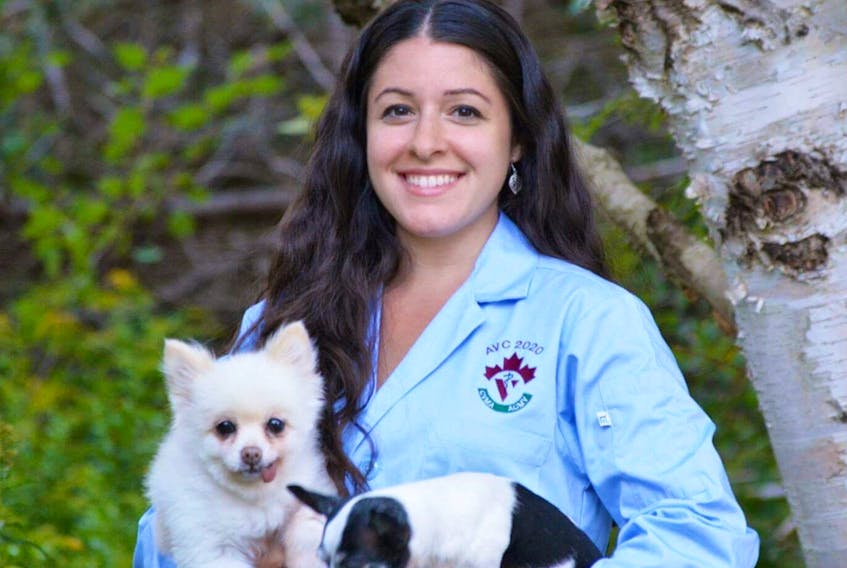Jessica D’Amico
Special to The Guardian
Introducing dogs to each other can be overwhelming and negative for some people and their dogs.
A dog’s body language can tell us a great deal about what it is thinking and feeling and, sometimes, even about its next move. Knowing what to look for can vastly improve the experience for all concerned.

First, introduce dogs in neutral territory and not in their own home. All animals should be leashed. Have some treats on hand to reward each dog for reacting calmly to the other. Let each dog move at its own pace, and never force two or more dogs closer to each other. Allow the dogs to move forward slowly and be aware of their body language as they move closer and interact.
Signs of fear and discomfort include yawning, crouching, nose licking, wide eyes with the whites of the eyes visible, low tail carriage, stiff gait, and turning of the head. Signs of defensive aggression are similar to signs of fear but include a low growl and less crouching. In the case of offensive aggression, a dog will likely be leaning forward with the hair on its back standing up (piloerection). Other signs of offensive aggression are a higher positioned tail, bared teeth, growling, stiff-legged gait and prolonged stare. This dog has a high potential for biting as the next step. Note that every dog is different, and some may show a combination of signs. Nevertheless, these are negative indicators and the dog should calmly be removed from the situation without punishment. Dogs should not be forced into interactions that make them uncomfortable.

A dog that is comfortable in a situation will be more relaxed and exhibit signs of play, such as play bows, lying down and exposing the belly, inviting belly rubs (showing trust and enjoying social contact) and relaxed facial expressions. In this case, it is ok to shorten the distance between dogs and possibly allow direct interaction. Body postures are relaxed in a normal, acceptable greeting. Pay close attention during play time and be mindful of your pets’ arousal level, especially if it is early in the relationship. If arousal levels get too high, this can cause unnecessary tension. Signs of over arousal include changes in vocalization, or more intense, jerkier movement. A good way to mitigate this tension without physical separation is to use a quick distraction.
If you have any concerns about your dog’s behavior, it is a good idea to seek the advice of a veterinary behaviorist or certified dog trainer so every party involved is safe and happy.

Jessica D’Amico is a third-year veterinary student at the Atlantic Veterinary College with a strong interest in behaviour. Animal Talk is a bi-monthly column in The Guardian produced by the Companion Animal Welfare Initiative (CAWI), the goal of which is to improve the welfare of owned and unowned companion animals on P.E.I. Members of CAWI are the P.E.I. Cat Action Team, P.E.I. Department of Agriculture and Forestry, PEI 4-H, PEI VMA, Sir James Dunn Animal Welfare Centre at AVC, SpayAid P.E.I., and P.E.I. Humane Society. For more information, see gov.pe.ca/agriculture/CAWI. Readers may send questions related to the well-being of owned and unowned companion animals to [email protected].
Need to know
What is the meaning of a wagging tail?
Most people think of a tail wag as a sign of happiness. However, a dog may wag its tail when it is excited, frustrated or overstimulated. A tail that is held high but wagged more slowly means that the dog is assessing a situation. A tail that is extended and curved means that the dog is tense and ready to take offensive or defensive action. A tail that wags around and is accompanied by relaxed fluid body movement and a wiggling bottom signals friendliness and a willingness to engage.









